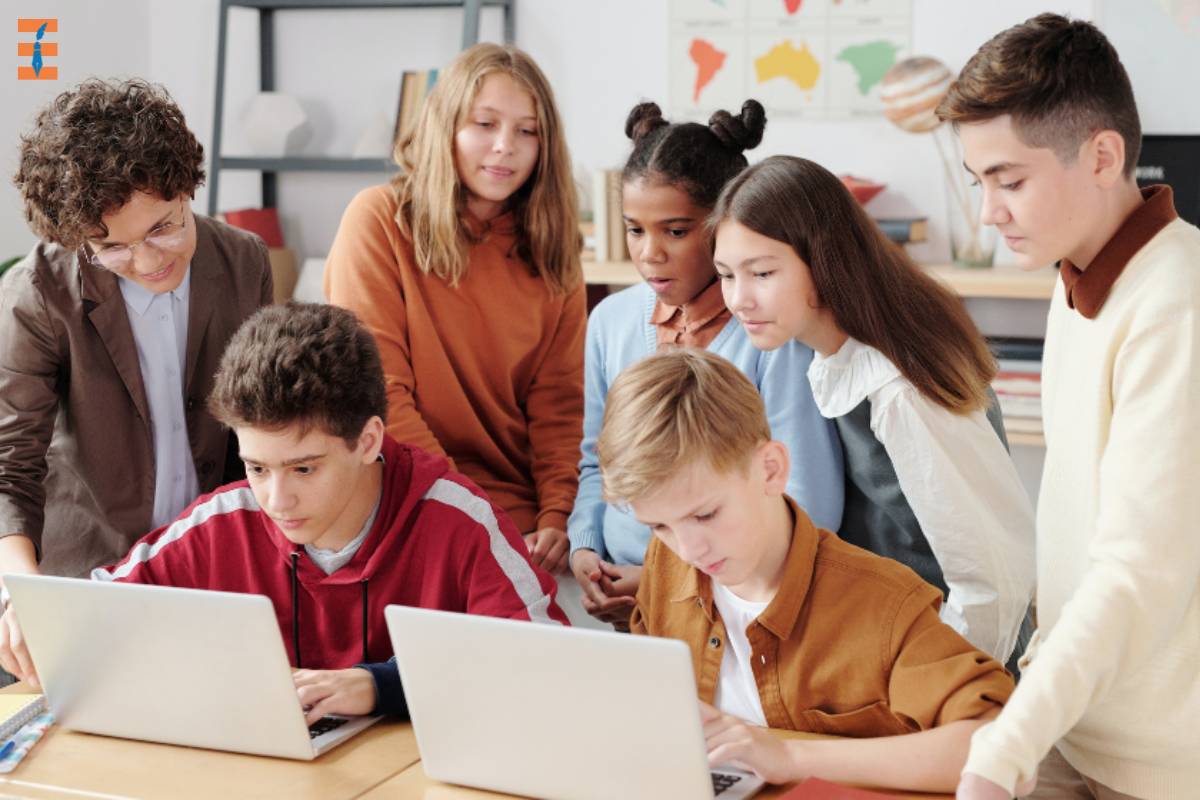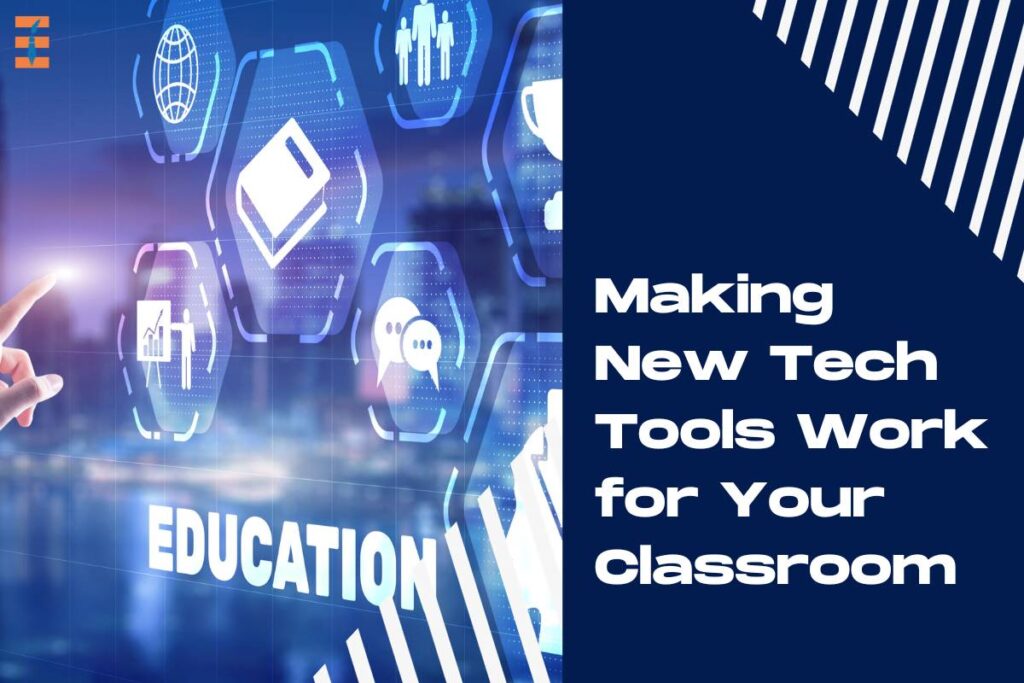In today’s ever-evolving educational landscape, technology has become an integral part of creating a better learning environment in classrooms. From interactive whiteboards to educational apps, tech tools have the potential to transform the way we teach and learn. However, the key to reaping the benefits of these tools lies in knowing how to effectively integrate them into your classroom. This article explores the essential strategies and best practices for making new tech tools work for your classroom. This article will also help you ensure a more engaging and productive learning environment.
The Role of Tech Tools to Create a Better Learning Environment in Classrooms:
Tech tools have ushered in a new era of education, enhancing the learning environment in various ways:
- Engagement: Interactive apps, videos, and games capture student’s attention and make learning more engaging and enjoyable.
- Personalization: Technology allows for adaptive learning, tailoring content to individual student needs, thus fostering a more personalized learning environment.
- Collaboration: Tech tools enable students to collaborate online, facilitating group projects and communication, even outside the classroom.
- Access to Resources: The internet and digital libraries provide students with an abundance of information at their fingertips, expanding their learning resources.
- Real-World Relevance: Technology exposes students to real-world applications, preparing them for the digital challenges of the future.
Challenges of Implementing Tech Tools for a Better Learning Environment

While the benefits of tech tools are clear, their integration is not without challenges:
- Access and Equity: Not all students have equal access to technology, creating disparities in learning opportunities.
- Professional Development: Teachers may need training and support to effectively use tech tools.
- Digital Distractions: Misuse of technology can lead to distractions, hindering learning.
- Privacy and Security: Protecting student data and maintaining online security is paramount.
- Over-Reliance: Overuse of tech tools may lead to neglecting essential traditional teaching methods.
Strategies for Successful Integration
To ensure tech tools enhance the learning environment without overshadowing traditional teaching methods, educators can follow these strategies:

- Set Clear Objectives: Define clear learning objectives and goals for using tech tools. What do you want your students to achieve or learn with the technology? Align your tech tool selection with these objectives.
- Select Appropriate Tech Tools: Choose tech tools that align with your teaching style and learning objectives. Evaluate tools based on ease of use, relevance to the curriculum, and accessibility.
- Professional Development: Invest time in learning how to use tech tools effectively. Attend workshops, and webinars, and explore online resources to build your expertise
- Promote Digital Literacy: Teach students digital literacy skills, including how to evaluate online information, protect their privacy, and use technology responsibly.
- Active Learning: Encourage students to actively engage with tech tools rather than passively consuming content. Ask questions, initiate discussions, and facilitate critical thinking.
- Feedback and Assessment: Use tech tools for formative assessment, providing instant feedback to students. Analyze the data to tailor instruction to individual needs.
- Differentiated Instruction: Leverage tech tools to provide a personalized learning environment. Adaptive software can adjust the difficulty of tasks based on student performance.
- Collaboration: Promote collaboration by using tools that allow students to work on projects together, even when physically apart.
- Digital Citizenship: Teach students the importance of responsible online behavior, including proper communication and ethical use of information.
- Accessibility: Ensure that all students, regardless of their physical or learning disabilities, can use tech tools. Make accommodations as necessary.
- Peer Learning: Encourage students to teach each other how to use tech tools. This peer-to-peer learning can be highly effective.
Benefits of Effective Tech Tool Integration
When tech tools are thoughtfully integrated into the classroom, the benefits are numerous:
- Improved Learning Outcomes: Personalized learning, instant feedback, and engaging content enhance student performance.
- Enhanced Teacher Efficiency: Tech tools can automate administrative tasks, allowing teachers to focus more on instruction.
- Global Connection: Technology connects students to resources and people worldwide, broadening their perspectives.
- Preparation for the Future: Tech-savvy students are better prepared for future careers and challenges in an increasingly digital world.
- Increased Engagement: Students are more likely to be excited about learning when it involves technology.
- Data-Driven Decision Making: Analyzing tech tool data can inform instructional decisions and help identify areas for improvement.
Common tech tools to create a better learning environment in classrooms:

There are various types of tech tools that can be beneficial in the classroom. Some common categories include:
- Learning Management Systems (LMS): Platforms like Google Classroom, Canvas, and Moodle help manage coursework, assignments, and communication.
- Interactive Whiteboards: Interactive whiteboards facilitate dynamic lessons, enabling teachers to incorporate multimedia and interactive content.
- Educational Apps: There are numerous apps for various subjects, allowing students to practice and reinforce their knowledge.
- Online Collaboration Tools: Tools like Google Docs, Microsoft Teams, and Slack facilitate communication and collaborative projects.
- Digital Resources: Online libraries, educational websites, and multimedia content provide additional learning materials.
- Adaptive Learning Platforms: These platforms, like Khan Academy and DreamBox, tailor instruction to individual student needs.
- Coding and Programming Tools: Platforms like Scratch and Tynker introduce students to coding and computer science.
Conclusion
The successful integration of tech tools in the classroom for a better learning environment can be a game-changer for educators and students alike. When approached strategically, technology has the potential to enhance learning outcomes and engage students. This will help them prepare for the digital world they will encounter in their future careers. Educators can harness the power of technology by setting clear objectives, staying informed, and using tech tools responsibly. Remember, tech tools should be a complement to traditional teaching methods, not a replacement. Striking the right balance is the key to harnessing the potential of technology in the classroom effectively.










